(a) The rising and setting of celestial bodies occurs as a result of the daily rotation of the celestial sphere. These bodies move along circles that are parallel to the celestial equator, known as diurnal or celestial parallels.
The occurrence of the rising and setting of celestial bodies depends on the observer’s geographic latitude j and the declination d of the bodies. The diurnal parallels of the bodies can either intersect the mathematical horizon at two points or be entirely above or below it (Fig. 8). The point where a celestial body crosses the eastern part of the true horizon is called its rising point, while the point where it crosses the western part of the true horizon is called its setting point.
The celestial body ascends and descends at a specified latitude j if the absolute value of its declination is taken into account.
If the celestial body is located on the celestial equator QQ where its declination d equals zero, it will rise precisely at the eastern point E and set exactly at the western point W.
If the declination of the celestial body d is greater than zero (celestial parallel aa), it will rise in the northeast and set in the northwest.
If the declination of the celestial body d is less than zero (bb), it will rise in the southeast and set in the southwest.
Lastly, if the absolute value of the declination of a celestial body is equal to or greater than (90° – j),
the celestial body will not rise or set at the given latitude j.
If the diurnal parallel does not cross the mathematical horizon, it will either be unsunsetting (where the diurnal parallel ll is completely above the horizon) or a non-rising luminary (where the diurnal parallel kk is completely below the horizon).
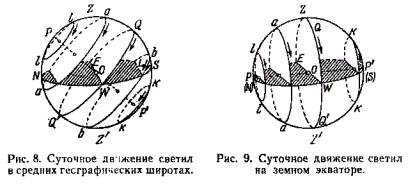
If an observer is located on the Earth’s equator ( j = 0), then all celestial bodies rise and set for them according to condition (1.4). This is because at the Earth’s equator (Fig. 9), the north pole of the planet P is on the horizon at the north point N, while the south pole of Р is at the south point S. The celestial equator QQ ‘ is perpendicular to the mathematical horizon and passes through the zenith Z . As a result, the planes of daily parallels of all celestial bodies are also perpendicular to the plane of the mathematical horizon. Therefore, all celestial bodies rise and set, remaining visible above the horizon for 12 hours and remaining invisible for the same number of hours.
If the observer is located at the Earth’s north geographic pole (j = +90), then according to equation (1.5), the luminaries with d > 0 are considered non-setting. In this case, the observer’s zenith Z coincides with the celestial pole P, and the celestial equator QQ’ aligns with the mathematical horizon. As a result, the planes of the luminaries’ diurnal parallels are parallel to the plane of the mathematical horizon, causing the luminaries to remain above the horizon without rising or setting. Hence, the luminaries in the northern hemisphere of the celestial sphere (d > 0) are always visible, while the luminaries in the southern hemisphere (d < 0) are never visible.
It’s easy to understand that an observer situated at the South Pole of Earth, conversely, will consistently witness the luminaries of the celestial sphere’s southern hemisphere (d d � > 0).
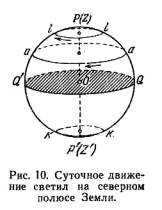
If the observer is at a latitude j that is different from 0 and 90, some of the celestial bodies will appear to rise and set, while others will not.
b) Culminations of celestial bodies. The daily path of each celestial body crosses the celestial meridian at two points that are located at the opposite ends of the path.
This event of a celestial body crossing the celestial meridian is known as the culmination of the celestial body.
The culmination is called upper if the celestial body crosses the upper part of the celestial meridian PZQSP ' which contains Z (Fig. 7), and it is called lower if the celestial body crosses the lower part of the celestial meridian PNQ ' Z ' P ' which contains Z '.
A distinction is made between the zenith and the upper culmination south of the zenith (on the arc of the ZQSP ‘ ) and north of the zenith (on the arc PZ ).
For luminaries that do not set at a given latitude j, there are two climaxes available for observation – the upper and lower. However, in the case of ascending and descending luminaries, only the upper climax is observable, as the lower climax occurs below the horizon. In non-ascending luminaries, neither climax can be observed as they both occur below the horizon.
You may be wondering why luminaries rise and set. This phenomenon occurs because the earth rotates on its own axis, and as a result, you rotate with it. The shape of the earth does not affect this process.
The answer to the second question is quite simple: It is not the luminaries that move, but rather the Earth.
As we know, the sun revolves around the center of the galaxy, while the moon revolves around the Earth. So, if you were asking about the direction of their movement, you should have used the words “left” or “clockwise.”
Because of the Earth’s daily rotation, the luminaries follow circular paths that are parallel to the celestial equator. These paths are known as daily or celestial parallels.
When we observe the rising and setting of celestial bodies such as the Sun, Moon, and planets, it is due to the Earth’s rotation. The Earth rotates from West to East, causing celestial bodies to rise in the East and set in the West.
The rise of the luminary occurs when it crosses the mathematical horizon, transitioning from the invisible section of the celestial sphere to the visible.
The setting of the luminary happens when it crosses the mathematical horizon, transitioning from the visible section of the celestial sphere to the invisible.
The culmination of the luminary is when it crosses the celestial meridian. There are two types of culmination: upper and lower. Upper culmination occurs at the upper part of the celestial meridian, where the luminary reaches its maximum height above the horizon and minimum zenith distance. Lower culmination occurs at the lower part of the celestial meridian, where the luminary reaches its minimum height above the horizon and maximum zenith distance.
During the upper culmination of the luminary at any meridian, the local sidereal time at that meridian is equal to the luminary’s right ascension.
Morning twilight is the period of time before sunrise.
Evening twilight is the period of time after sunset.
There is a distinction between civil twilight and astronomical twilight.
Evening civil twilight starts at sunset and continues until the Sun’s height is ho= -6°. Morning civil twilight starts before sunrise, when its center reaches a height of ho= -6°, and ends at sunrise.
Astronomical twilight (both morning and evening) lasts longer because it begins and ends when the center of the Sun reaches a height of ho= -18°.
Once civil twilight ends, artificial light is needed, and the brightest stars become visible in the sky. North of latitude 60°.5, civil twilight can last from sunset to sunrise.
At the end of evening astronomical twilight, the last traces of evening dawn disappear, and fainter stars become visible. North of latitude 48°.5, astronomical twilight can last from sunset to sunrise.
Sundown or sunset refers to the moment when the luminary disappears below the horizon. Sunset is often more vibrant than sunrise, showcasing brighter red and orange hues. Throughout the day, the Sun warms the Earth’s surface, causing a decrease in relative humidity and an increase in wind speeds, which in turn, stirs up dust into the air. However, the disparity between sunrise and sunset can vary depending on the observer’s geographical location.
The rising and setting of celestial bodies, such as the Sun. The culmination points above and below. The specific times and azimuths of these events. Twilight. Periods of prolonged daylight.
Due to the daily rotation of the celestial sphere, all celestial bodies trace circles that run parallel to the plane of the celestial equator, resulting in their movement along daily parallels.
Depending on the geographical latitude of the observation site j and the declination of the celestial body d, the daily parallels can either intersect the mathematical horizon at two points or be entirely above or below it.
The first celestial bodies are the ascending and setting bodies.
The point where a celestial body crosses the horizon from bottom to top is called the rising point, and the point where a celestial body crosses the horizon from top to bottom is called the setting point.
In the case of d = 90° – j (for the northern hemisphere), the diurnal parallel touches the horizon at the north point N.
determines the rising and setting bodies.
Considering the southern hemisphere:
From the first equation of system (2):
Neglecting refraction and diurnal parallax for the body on the horizon (z = 90°):
Similarly, the azimuths of the sunrise and sunset points can be derived from the first formula of the system (1):
Unable to find what you’re looking for? Try using the search:
Best quotes: What kind of mathematicians are you if you can’t properly protect yourself with a password. 8448 – 7339 – or read them all.
Turn off adBlock!
and refresh the page (F5)
very necessary
The time periods when the upper edge of the sun’s disk is on the horizon line are referred to as sunrises and sunsets. The rotation of the planet around the star and its own axis is the reason for sunrise and sunset. If the Earth did not have a spherical shape and did not orbit, daylight would constantly be at its zenith. Under such conditions, the existence of life on the planet would be impossible.
What does a sunrise mean?
A sunrise is the moment when the upper part of the Sun becomes visible above the horizon. In the field of astronomy, this term is used to describe the full movement of the solar disk as it crosses the horizon line.

Because of the impact of the atmosphere, an observer on Earth witnesses the sunrise a bit earlier than they would if the planet lacked an atmospheric layer. Additionally, this phenomenon occurs even earlier when the observer ascends to a higher elevation.
When viewed from the Earth’s surface, the solar angular diameter measures 30 minutes of arc (or 0.5°). This indicates that the length of the day should be slightly longer than half a solar day. However, atmospheric refraction has a significant effect on the day’s duration.
Refraction, also known as refraction, refers to the bending of the sun’s rays when they pass through the Earth’s atmosphere. When the sun rises, it appears to be about 35 minutes higher in the sky compared to a planet without an atmosphere. This means that for an observer on Earth, the sunrise occurs earlier than it would without refraction.
Due to the effects of refraction, the length of the day is altered in different latitudes:
- In equatorial latitudes, the day lengthens by approximately 10 minutes.
- In temperate latitudes, the day lengthens by up to 30 minutes.
- In polar regions, the day can be extended by up to 2 days.
Sunset is a natural occurrence where the upper part of the sun’s circular shape gradually disappears below the horizon. In the field of astronomy, this phrase is used to describe the entire sequence of events as the Sun descends below the horizontal line.
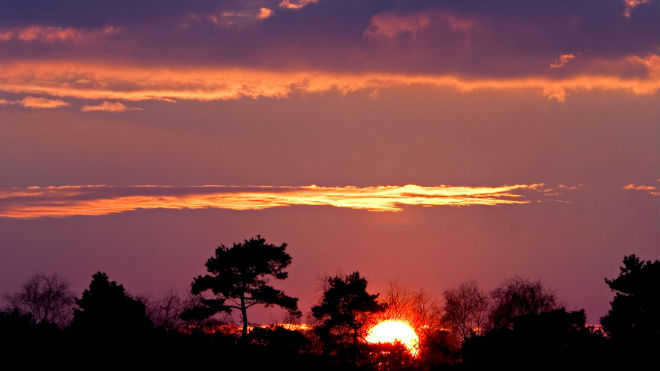

The occurrence of sunset, similar to sunrise, is affected by atmospheric refraction. The sunset that can be seen from the surface of the Earth is witnessed at a later time than its actual happening. Moreover, the occurrence of sunset is delayed when the observer changes their position to a greater altitude.
Origin and Setting of the Sun
For the majority of individuals, it is widely known that the Sun rises in the east and sets in the west. However, this is a general perception. In reality, the occurrence of sunrise strictly in the east and sunset strictly in the west is limited to only two instances throughout the year – during the vernal and autumnal equinoxes.
Throughout the remainder of the year, the Sun’s movement is from the north to the south. Each day, the points of contact between the Sun and the horizon at sunrise and sunset shift slightly. During the June solstice, sunrise is observed at its maximum northeastern point. Subsequently, the Sun rises slightly further south each day. Finally, at the September equinox, the Sun sets precisely in the west and rises precisely in the east.
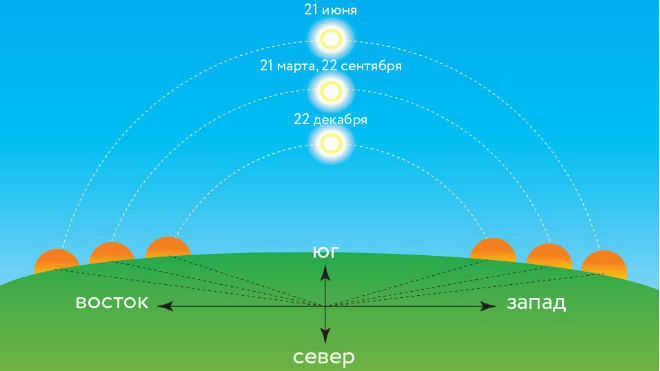
Regardless of the time of year, the Sun moves perpendicular to the horizon in equatorial latitudes.
The sunrise and sunset mark the brief moments of the start and end of the day. Twilight, on the other hand, is a longer period that bridges the gap between day and night. Morning twilight refers to the time between dawn and sunrise, while evening twilight refers to the time between sunset and sunset. The duration of the twilight period depends on the observation point on the planet and the calendar date.
- The equator experiences 20 to 30 minutes of sunrise and sunset.
- In temperate latitudes, the duration of sunrise and sunset is around 2 hours.
- In subpolar regions, sunrise and sunset can last for several days.
- At the polar regions, sunrise and sunset can persist for up to 3 weeks.
Due to the planet’s rotation, the timing of sunrises and sunsets varies across different parts of the world. Contrary to popular belief, the earliest sunrises are observed in the islands of Kiribati, located on the eastern meridian, while the latest sunsets occur in the islands of the Aleutian archipelago, situated on the western meridian near Alaska.
The duration of daylight hours fluctuates, resulting in the shifting of sunset and sunrise times throughout the year. In the northern hemisphere, summer days are longer compared to winter days, while the opposite is true in the southern hemisphere. Additionally, the length of daylight varies across different latitude zones, with shorter days occurring as latitude increases.
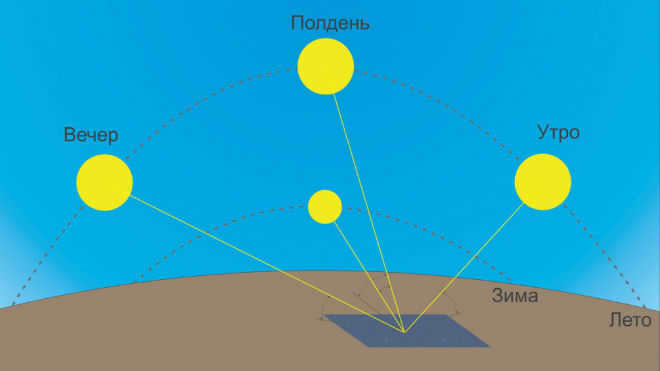
If you want to know the timetable of when the sun rises and sets during a specific season and at a specific latitude, you can consult calendars or utilize online services dedicated to providing this information.
How to Tell the Difference Between a Sunset and a Sunrise
During the moments when the Sun ascends and descends, a mesmerizing optical phenomenon occurs – the sky and the Earth’s surface become adorned with rays of various hues. It is possible to visually discern whether it is a sunset or a sunrise by observing the prevailing colors. The tones of a sunrise are more delicate and cool, with a prevalence of pink, purple, and blue shades. In contrast, during a sunset, the sky displays vibrant red and yellow hues, occasionally accompanied by areas of greenish sky and illuminated earth’s surface.
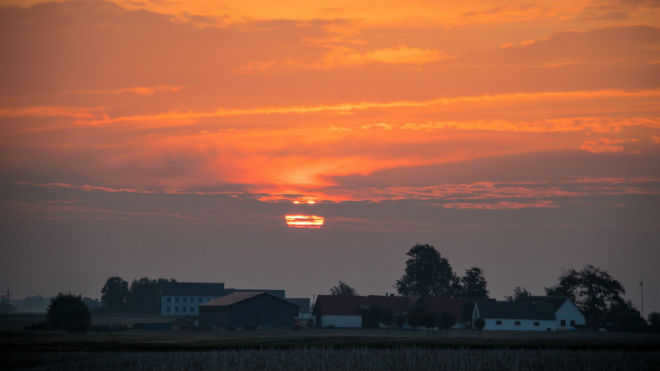
The deeper and more vibrant colors of a sunset are the result of various factors. One explanation is that during the day, the Earth’s surface heats up, causing moisture to evaporate and air currents to move faster. These air currents capture dust particles, creating a suspension in the atmosphere. When sunlight passes through this dust suspension during sunset, the light scatters and dims, giving the sky a range of red hues. This is because the red color of the solar spectrum, which has the longest wavelength, is less likely to scatter in a dusty and compacted atmosphere compared to shorter wavelength cold colors. On the other hand, during the night, the air layers become clearer and the dust settles, resulting in a dawn sky that is characterized by greater clarity and a wider variety of hues.
Sunsets and sunrises are breathtaking sights, even in urban environments. Photographers all over the world capture the magnificence of these natural phenomena, producing images that are difficult to tear your eyes away from.
Rising – The act of a celestial body appearing above the horizon at a specific location; the act of the celestial body disappearing from the horizon is known as setting.
Due to the phenomenon of refraction, the observed times of sunrise and sunset do not align with the actual times of the celestial body’s position on the horizon.
For a location on the Earth’s surface with a north or south latitude equal to φ, both of these events only occur for celestial bodies whose north or south declination is less than 90°-φ. Therefore, for example, in the case of St. Petersburg, which has a latitude of approximately 60°, only celestial bodies with a declination less than 30° will rise and set:
- Celestial bodies with a declination greater than 30° are always above the horizon in Petersburg.
- Celestial bodies with a southern declination greater than 30° always remain below the horizon in Petersburg.
- The stars that meet the above condition of declination rise and set at the same time every day in sidereal time, due to their consistent direct ascent and declination. This also means that the points on the horizon where they rise and set remain unchanged over small intervals of time.
- On the other hand, the sunrise and sunset times of other celestial bodies, as well as the position of the horizon points where they occur, vary from day to day. For example, in spring and summer when the Sun’s declination is northern, the sunrise and sunset points are inclined towards the north from the east and west points. In autumn and winter, when the Sun’s declination is southern, the inclination shifts towards the south.
The ancients had different terms to describe the different types of sunrise and sunset.
- If a star’s sunrise or sunset occurred during the morning or evening twilight, it was called heliacal by the ancients;
- If a star’s sunrise or sunset coincided with the sunrise or sunset of the sun, it was called cosmic sunrise or sunset;
- If a star’s sunrise or sunset coincided with the sunset or sunrise of the sun, it was called acronycotic sunrise or sunset.
Influence of refraction
The astronomical coordinates of a celestial body are typically defined as the coordinates of its geometric center. Therefore, it would be logical to consider the moments of sunrise or sunset as the moments when the geometric center of the sun is exactly on the horizon line. However, in astronomy, it is conventionally accepted that the moment of sunrise (sunset) is the moment when the upper point of the solar disk appears (disappears) on the horizon line. This is due to the refraction of light in the Earth’s atmosphere.
The angular size of the sun is approximately 30 angular minutes (0.5°), and the average angular velocity of the sun is 0.25° per minute. As a result of the refraction, the apparent position of the sun is slightly higher than its true position, which causes the solar day to be slightly longer. Specifically, the refraction lengthens the solar day by approximately 2 minutes.
The duration of the solar day is greatly influenced by a different element, known as atmospheric refraction. This phenomenon causes the sun’s rays to bend as they pass through the atmosphere, resulting in the sun appearing 35 angular minutes higher at both sunrise and sunset compared to its position in the absence of an atmosphere. In regions near the equator, where the sun rises almost perpendicular to the horizon, this atmospheric refraction adds an extra 4 minutes and 40 seconds to the length of the day. However, in latitudes near the poles, where the sun rises in a gentle and almost parallel line to the horizon, the effect of atmospheric refraction can lengthen the day by several days.
The poet Park Chiwon, who lived in the 18th century in Korea, beautifully captures the sunrise on the seashore of the Geumgangsan Mountains in his poem “From Cheongseok Arbor I Watch the Sun Emerge”. In this poem, he skillfully combines elements of reality and mythology, depicting the cosmic struggle between light and darkness.
The boundaries between heaven and earth are not clearly defined, but they are slowly emerging. A red line divides the unity into two.
The poet goes on to describe the various stages of the sunrise, each representing a battle between the forces of light and darkness:
- a small red dot (resembling a pimple on the water’s surface),
- a thin red line,
- a trembling rectangle,
- an ellipse,
- a circle (resembling a wagon wheel).
Related Articles
- ↑ History of World Literature. In 9 vol. V.5. M., 1988. P.608 (authors of the section – M. I. Nikitina, A. F. Trotsevich
This article has been sourced from the Encyclopedic Dictionary of Brockhaus and Ephron (1890-1907).
Wikimedia Foundation . 2010 .
There was a time when I needed to study the fundamentals of the Quran. In Surah Al-Anam, Ayat 158, it states that (meaning) “…the Day of Judgment will not come until the sunrise occurs in the west. And once that happens, then all people will believe in Allah.” But what would happen if the Earth started rotating in the opposite direction?

The positions of sunrise and sunset swap
It is common knowledge that the sunrise typically happens in the East as a result of the anti-clockwise rotation of our planet on its axis. Consequently, the Sun emerges in the morning in the Eastern Hemisphere and descends in the Western Hemisphere. This pattern is observed across all planets in the solar system, except for Venus, which rotates in a clockwise direction. But what if the Earth were to start rotating in the opposite direction? In such a scenario, the following significant global transformations would take place:
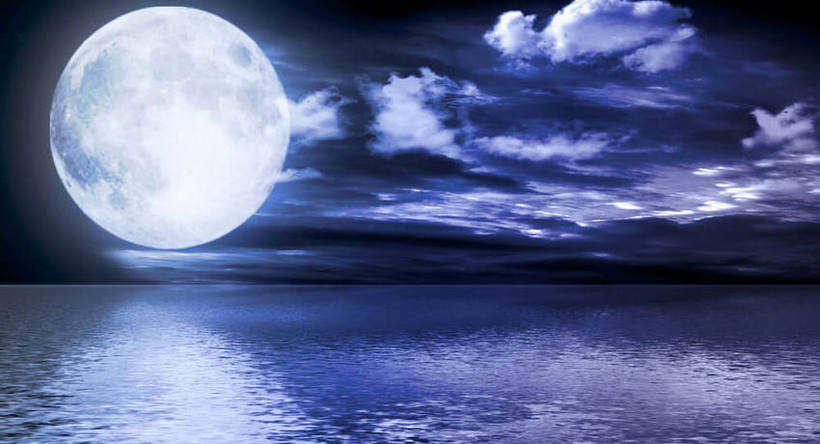
- If wind directions had changed (for instance, Europe would no longer experience the warm air masses from the Atlantic, but would become familiar with the cold Siberian winds).
- The climate would undergo a complete transformation, leading to a shift in climate zones by one level.
- The atomic (ultra-precise) calculation of time would be altered and would increase by several seconds.
- The sequence of illumination on different parts of the Earth’s surface would also be altered, resulting in a reversal of seasons.
- The interaction between the Moon and the Earth would be modified, impacting the strength and timing of tides.
A modification in the orientation of our planet’s rotation would undeniably have brought about global calamities.
The Sun once used to emerge in the western sky
Certain pseudo-scientists hypothesize that the Earth formerly rotated in an alternate direction, and furthermore, the planet’s magnetic field was arranged in a different manner than its current state. Subsequently, approximately 780,000 years ago, there was a rapid reversal of the magnetic poles, resulting in:
- a drastic alteration in climate;
- a shift in the rotational direction of our globe;
- the dawn commencing to ascend from the eastern horizon.
These modifications are accountable for the complete eradication of the Neanderthals.

Nevertheless, it has been scientifically demonstrated that the reversal of a planet’s magnetic poles has occurred multiple times in the past and does not result in a change in its rotational direction.
The sun is an invaluable asset to our planet. It harbors countless enigmas and puzzles, yet only a handful have been unraveled by humanity. Allow me to shed light on one of them.
The exploration of the Sun by our ancestors.
For generations, people have been fascinated by the phenomenon of the sun rising and setting. This curiosity has led to the creation of numerous legends and myths surrounding this celestial event. The sun has always been a universal symbol of life and light, and as such, it has been revered and worshipped by cultures all around the world.
The ancient Greek astronomers were the pioneers in the scientific study of the Sun. They believed that the sun was one of the seven planets in the solar system, a notion that was popular during the 5th and 4th centuries B.C. They were particularly interested in understanding the distance between the earth and the sun, as well as the patterns of sunrise and sunset. Over time, they developed various theories, some of which turned out to be remarkably accurate.
Once astronomers reached the realization that the Earth is in motion, everything clicked into place. It dawned on people that the sun does not actually rise; rather, it appears to do so as a result of the Earth’s counterclockwise rotation around it. This is how the transition from day to night occurs.
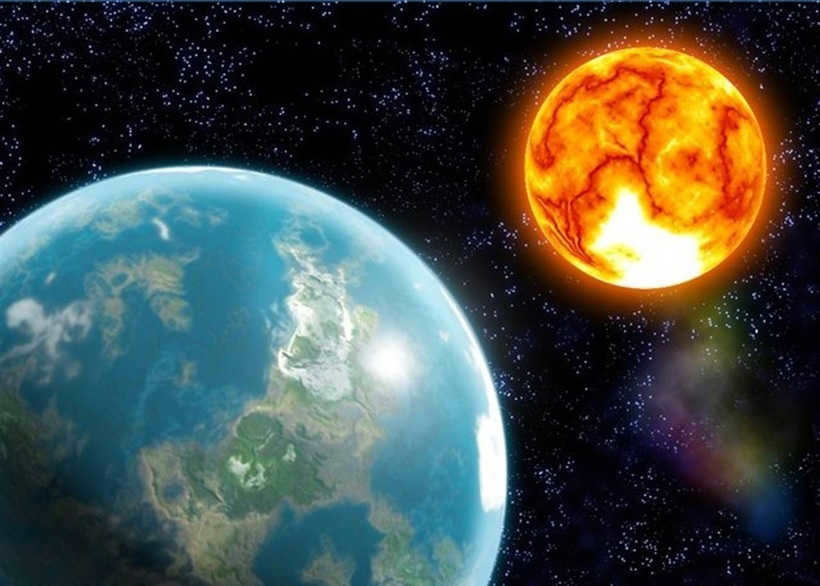
Where does the sun rise? Where does it set?
The sunrise is defined as the precise moment when the first portion of the Sun becomes visible above the horizon. On the other hand, the sunset is the exact moment when the upper edge of the Sun disappears below the horizon.
Interestingly, ancient astronomers classified sunrises and sunsets into three distinct categories: helical, cosmic, and acronyctic.
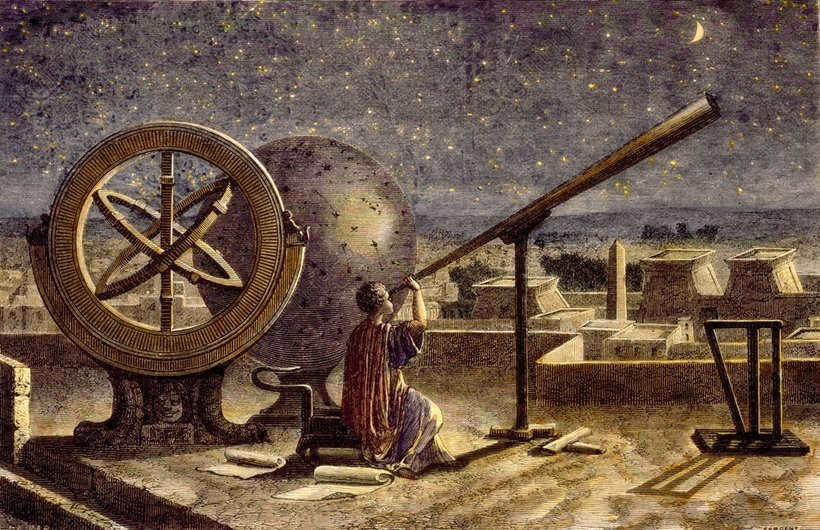
- In the event that the occurrence of the sunrise or sunset of a celestial body happened during the period of morning or evening twilight, the occurrence was known as heliacal;
- The occurrence of the sunrise or sunset of a celestial body happening at the same time as the sunrise or sunset of the Sun was referred to as cosmic sunrise and/or sunset;
- When the time of sunrise or sunset of a celestial body coincided with the time of sunset or sunrise, it was known as acronycotic sunrise or sunset.
EAST vs WEST: A Childhood Lesson
Like many children, I too learned about the different parts of the world through a simple association game. My parents used a clever technique to teach me about the East and West. They would often explain that:
Although the concepts are fundamentally logical, I had a strong desire to expand my knowledge. In the Russian language, the East represents the location where the sun rises above the horizon, while the West signifies its descent below the horizon, as it sinks into the water and vanishes from our sight. However, the naming of the South holds a deeper significance, originating from the Old Russian word “yugA,” which conveys the notions of scorching heat, dreadful drought, the peak of warmth, and specifically, the zenith of the sun at noon. Our ancestors possessed the remarkable ability to discern their path, navigate their way, and even determine the time solely by observing the sun and its shadows. All of this knowledge was derived from the sun alone. On the other hand, the North acquired its name from the term “sivy,” which denotes a stern, frigid, and gray quality. In different languages, the directions and compass colors may vary, but we can all agree upon our collective understanding of the cardinal directions and their corresponding hues.
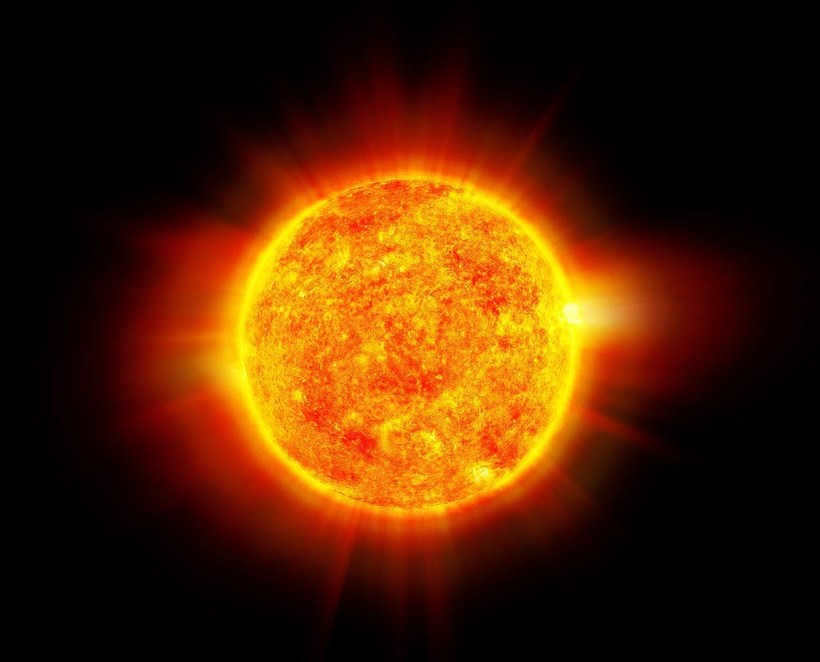
My father was once puzzled by the question of why dawn is in the east and dusk in the west. He then offered a simple explanation, stating that people from ancient times observed where the sun rose and set, and thus named these directions east and west. While he was partially correct, I learned a bit more during my physics elective in school. Allow me to now share with you what I still recall.

Reasons behind the Eastward Sunrise and Westward Sunset
Surprisingly, the sun remains motionless. When viewed on a larger scale, it becomes evident that the Earth is the one rotating on its axis. It is this counterclockwise rotation of our planet that gives rise to the modern concepts of east and west. This phenomenon is not exclusive to Earth; it applies to all celestial bodies that were formed in the early stages of the solar system. Some notable examples include:
However, there is an exception to this rule – Venus. It rotates in a clockwise direction, and astronomers and physicists are still trying to comprehend the reasons behind this anomaly.

What causes the Earth to rotate?
It was natural to inquire into the cause of the Earth’s rotation, which leads to sunrise in the east and sunset in the west. It was discovered that everything is explained by the law of conservation of momentum. This momentum originated billions of years ago, when the entire system was just a disk made up of a mixture of gas and cosmic dust. Scientists predict that this momentum will endure for billions of years.
These predictions also take into account the Moon’s role in gradually slowing down the Earth’s rotation on its axis. This is due to the Moon’s creation of tides, which generate friction between the world’s oceans and the planet’s surface. As the water moves in the opposite direction during these times, it causes the rotation to slow down.
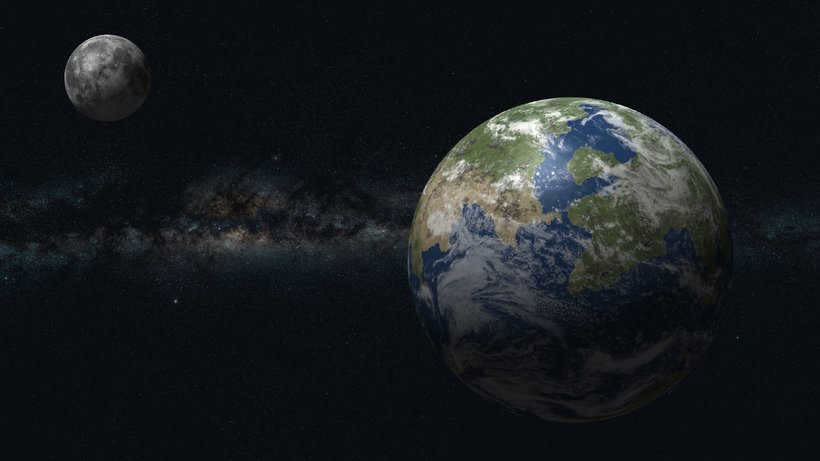
Humanity has countless opportunities to witness the beauty of sunrises and sunsets every day. It is crucial not to take them for granted.
During my early childhood, around the age of 5 or 6, I struggled to remember the directions of the world in relation to my home: east, west, north, south. To help me, my parents came up with a clever trick. They asked me if I knew which direction the sun rises and sets. Of course, I did. They then explained that the east is where the sun rises and the west is where it sets. After that, it was easy to remember north and south. I became curious about the reason behind the consistent eastward sunrise and westward sunset.

The impact of the Earth’s rotation on the transition from day to night
Undoubtedly, the concepts of east and west are simply human-made labels. However, the Sun’s movement across the sky is primarily influenced by the Earth’s rotation on its axis. It may seem that this is the complete explanation for why the Sun consistently rises in a particular part of the sky. However, this explanation is only half of the story, as it is crucial to comprehend the underlying reasons for the Earth’s rotational pattern.
The explanation for this occurrence can be traced back to ancient times. Around five billion years ago, during the early stages of our solar system’s development, all the matter within it orbited the Sun in a singular direction. As the planets took shape, they each acquired their own individual rotation, akin to spinning on their respective axes. If viewed from the perspective of the north poles, it becomes clear that they all rotate counterclockwise. This is the reason why sunlight reaches eastern countries before western countries.

When the West becomes the East: The Unique Sunrise Phenomenon on Venus
It is a universally accepted truth that there can be no such geographical anomaly on our home planet, Earth. And anyone who argues otherwise would be deemed irrational. However, our neighboring planet, Venus, defies this conventional wisdom by showcasing a truly extraordinary phenomenon – the sun rises in the west and sets in the east. This peculiar characteristic can be attributed to Venus being the solitary celestial body in our solar system that undergoes a clockwise rotation. Scientists have put forth a myriad of hypotheses to explain this enigmatic behavior:
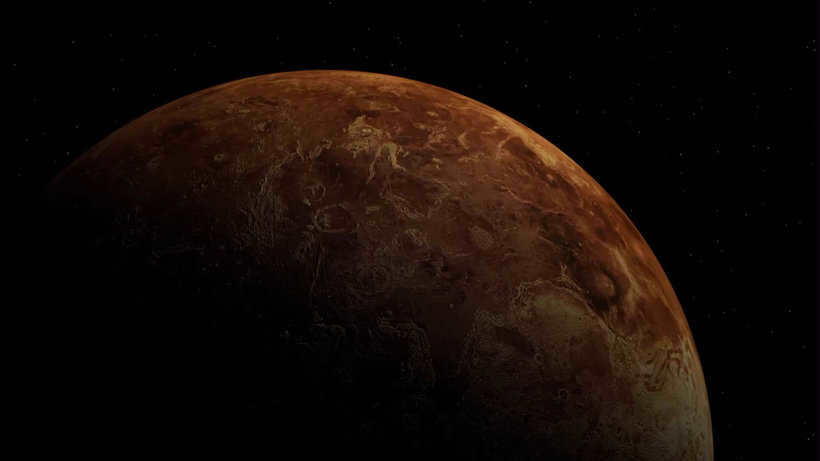
- One possible explanation for the occurrence of sunrise and sunset is a previous collision with another planet;
- Another hypothesis suggests that severe gravitational cataclysms during the formation of the planet could be the cause;
- Alternatively, it has been suggested that the impact of a particularly large asteroid could have played a role in this phenomenon.
However, on our planet Earth, the positions of east and west remain fixed. Nevertheless, it is worth noting that in approximately a few billion years from now, there is a possibility that the Earth’s rotation may cease, resulting in perpetual darkness on one side and eternal daylight on the other.

If you ask me, I would say that east and west are simply designations given by human beings to certain directions. However, from an astronomical perspective, the phenomenon known as sunrise in the east actually occurs only twice a year. Don’t believe me? Well, then let me share my personal account with you.

The movement of the sun
Each day, we witness the sun rise in the east, traverse the sky, and finally set in the west. In the alternate hemisphere, the sun follows a similar pattern, appearing again in our hemisphere. However, it is important to note that it is not the Earth that orbits around the sun, but rather the sun that revolves around its axis while remaining stationary. With the planet’s rotation taking approximately 24 hours, one would expect the sun to reappear at the same position after this time period. However, this assumption is not entirely accurate, and here’s why.
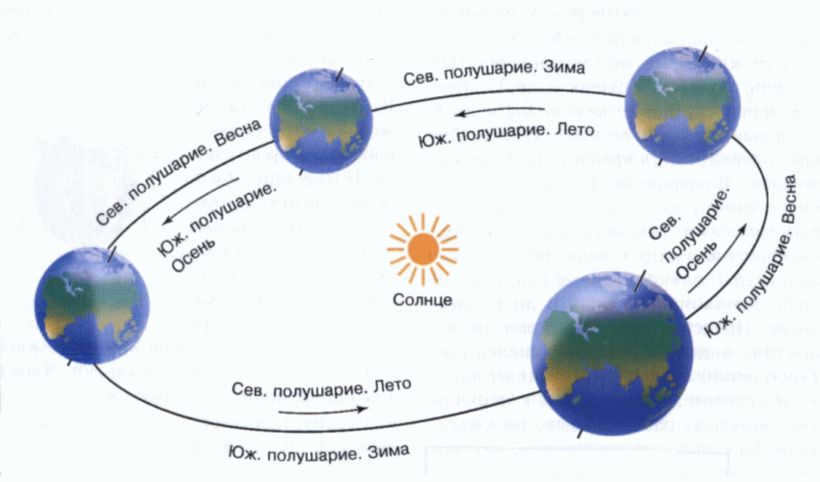
The Actual Locations of Sunrise and Sunset
In reality, the sun only rises exactly in the east and sets exactly in the west twice a year: on the days of the vernal and autumnal equinox. During these days, the sunrise and sunset points are also aligned with the east and west directions. However, throughout the rest of the year, the sun’s rising and setting points gradually shift towards the north. This is because, after the vernal equinox, the sun starts to climb higher in the sky, causing the sunrise and sunset points to move in a northerly direction. This continues until the summer solstice, when the sunrise and sunset points reach their northernmost positions. This phenomenon occurs due to the slight tilt of our planet. Additionally, there are several other interesting peculiarities:

- Once the vernal equinox is over, the sunrise and sunset points start converging beyond the Arctic Circle.
- During the summer solstice, these points overlap, resulting in the phenomenon known as polar day.
- Afterwards, they gradually shift back towards the south, leading to shorter days. Following the fall equinox, the convergence occurs in a southerly direction.
- On the day of the winter solstice, which is the shortest day of the year, the luminary reaches its extreme southern position, and this marks the beginning of the polar night.
I have provided an overview of the situation in the northern hemisphere, where our country is located. But what about the southern hemisphere? It’s a mirror image – when we experience the shortest day, they have the longest.
The daily occurrence of sunrise and sunset is a phenomenon that can be appreciated endlessly. Often taken for granted, we rarely stop to consider the algorithm behind the movement of the celestial body, the factors influencing its trajectory, or the reasons behind unusual occurrences such as polar days and nights, the northern lights, or eclipses.
The birth of the dawn and dusk of the celestial luminary
Constantly on the move, the Earth revolves around the sun and spins on its own axis. Every day, except in polar regions, one can witness the fiery orb vanishing beyond the horizon and reemerging from the opposite side the next day. The sunrise and sunset mark the moments when the “burning” disc of the celestial luminary fades from view, with the highest point either fully concealed or revealed (at the break of dawn).
There exists a phenomenon known as twilight in the field of astronomy:
- In the winter and summer seasons at high latitudes, it is possible for the sun to not fully set or rise. During these times, twilight is deemed to have a duration of zero.
- The duration of daylight at these latitudes is typically indicated as either 24 hours or 00 hours.
- Twilight can last anywhere from 15 to 25 minutes at various locations on the planet.
It can be inferred that twilight has both a commencement and a termination. The length of these periods is contingent upon the position of the sun during sundown. In the absence of an atmosphere on Earth and with the sun being a mere point, the zenith angle would measure 90 degrees. However, due to the sun’s non-zero angular diameter, light is refracted by solid particles. Consequently, the upper boundary of the solar disk is influenced by the movement of its center. In a standard atmosphere, a 90-degree zenith angle is altered to a perpendicular angle within 50 minutes. Consequently, if sunset initiated with a reduction in the perpendicular angle, twilight would endure for a longer duration.

After the sun disappears below the horizon, the next phase of twilight begins – civil twilight. The zenith angle is less than 96 degrees on the opposite side of the hemisphere. Further out, the angle increases to 102 degrees, which is known as nautical twilight. During this time, there is still enough light to see the horizon line on the water. Finally, there is astronomical twilight, where the angle reaches 108 degrees and the visibility of objects becomes poor.
Important! These calculation algorithms are not suitable for cities where there is no time change between summer and winter. The results will also be inaccurate for places like New Zealand, where daylight saving time is observed from May to September. Therefore, the times of sunrise and sunset will vary across different locations.
What is the reason for the sun appearing red?

Sunrise and sunset produce a remarkable visual phenomenon. The sun’s beams illuminate the surface of the Earth, causing the sky to be painted in various hues. During sunrise, we observe more delicate shades of red and yellow. At sunset, the dominant colors are red and maroon.
This occurrence is influenced by several factors. As evening approaches, the Earth’s surface becomes warmer, humidity decreases, and air currents intensify. The variation in the color spectrum is contingent upon the type of terrain:
- In flat regions, the sunset appears less vibrant.
- Along the coastal horizon, the sunset is more radiant.
- In northern latitudes, the sunset is more colorful but less bright.
The sun’s disk is positioned far from the horizon, causing its rays to reflect off the surface. In the western part of the horizon, the colors appear less intense, typically manifesting as shades of orange, red, or yellow.
The more we approach the horizon, the more prominent the red color becomes. On either side, there is a shimmering golden border. Above the break of dawn, a faint glow can be observed. On the opposite side of the globe, a bluish tint starts to appear in the sky. This is the earth’s shadow. Above it, a portion of the atmosphere takes on an ash-colored hue, known as the Belt of Venus. It becomes visible at an angle of 10 to 20 degrees above the horizon.
Fascinating! The red rays of sunlight are the longest, which is why they remain visible even during sunset. The yellow and white rays, being the shortest, are no longer perceptible once the sun dips below the horizon.
What influences the phase of the moon?
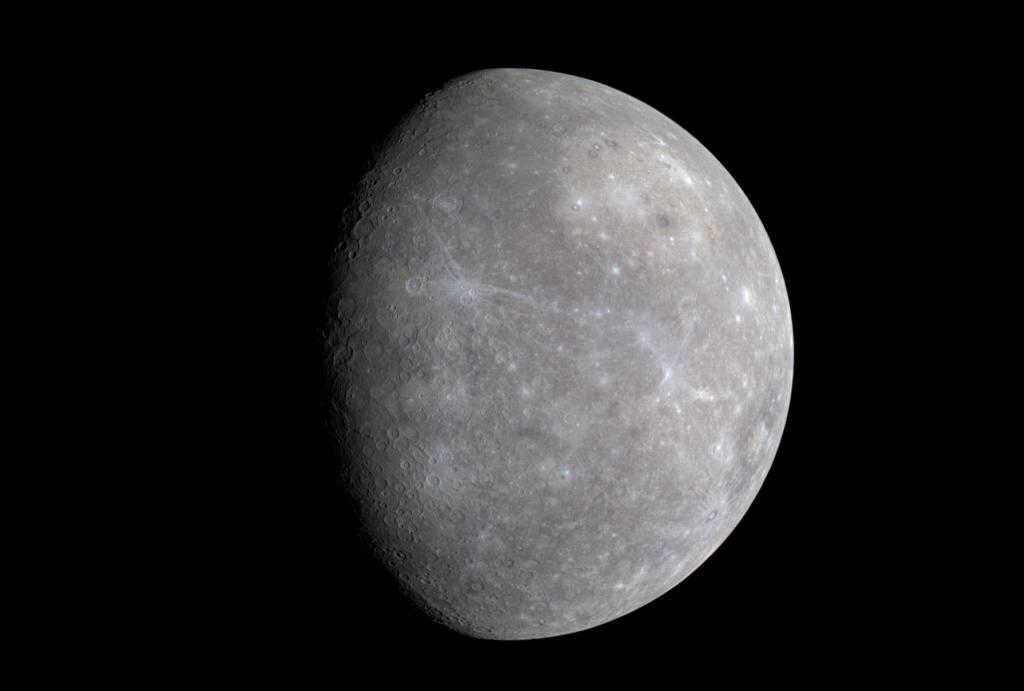
The appearance of the moon is not always the same. Initially, it appears as a crescent, and then it gradually becomes larger. Once it reaches fullness, it begins to shrink again. This process goes through several phases, forming a 29.5-day cycle:
- Phase One – when less than half of the moon’s entire disk is illuminated.
- The second phase marks the end of the new moon and the transition to the full moon.
- The third phase is characterized by the appearance of the full moon.
- The fourth phase is the final stage of the full moon, transitioning back to the new moon.
Sunrises and moonrises are connected. The moon’s surface reflects sunlight, illustrating its movement around the Earth.
In order to determine the exact times of sunrise and sunset, astronomers utilize a mathematical formula that incorporates the declination of the celestial body. The latitude can be obtained from a global map, while the height of the pole is determined based on the geographic latitude (a single value).
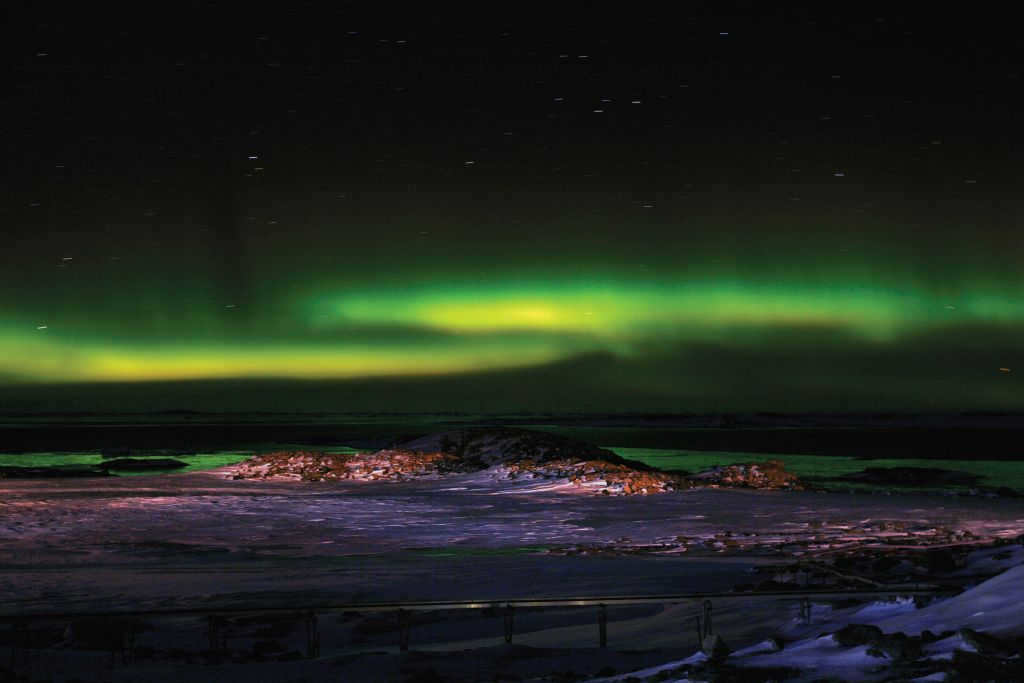
Nowadays, you can easily determine the exact time of sunrise and sunset by using a specialized application or referring to online calendar sources. There are various methods available on the internet for calculating these timings, ranging from simplified to more advanced ones, taking into account factors such as the movement of the sun and the observer’s location. While the phenomena of sunrise and sunset are intriguing, the world still holds many mysteries that defy scientific explanation and challenge our understanding of information.
What causes the variation in the duration of daylight?
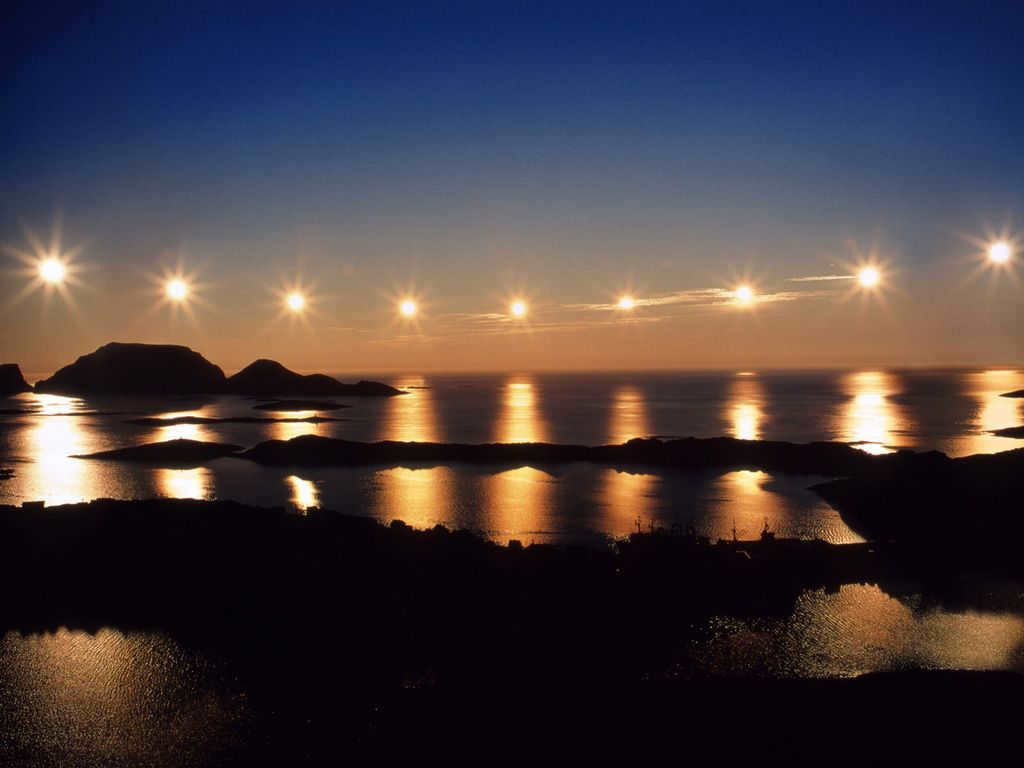
When the first pages of “Quiet Don” were published, readers had questions about the timing of sunset and sunrise. One common question was why the length of the day differs from what is stated in calendars.
The length of the day is the period between sunrise and sunset. However, it is not always possible to accurately calculate this time. This is because the angle of declination of the sun varies and affects seasonal changes in weather and the length of the day. The timing of sunrise and sunset determines the number of daylight hours and nighttime hours. In winter, the nights are longer, while in summer, the days are longer.
Moscow is situated around 55°N (north latitude), with the village of Veshenskaya at 49°N, and Rostov-on-Don at 47°N. The length of the day varies based on latitude, for example, on January 22nd, Moscow experiences 8 hours and 01 minutes of daylight, Veshenskaya has 8 hours and 54 minutes, and Rostov-on-Don has 9 hours and 10 minutes.
In the summertime, the situation is reversed: in late June, the daylight hours are 15 hours in southern Russia, while in St. Petersburg it extends to 18 hours. This means that the further north you go, the longer the summer days become.
The summer solstice, which falls around June 22nd, is when the longest daylight hours occur, while the winter solstice, around December 22nd, has the shortest daylight hours.
When it comes to calendars, one thing can be said: they primarily display the length of the day for a latitude of approximately 55-56 degrees. This latitude corresponds to Moscow. However, in the newspaper “Tikhiy Don,” the length of the day is specifically indicated for Veshenskaya. As a result, the figures vary.
Did You Know? Polar Days, Equinoxes, and the Northern Lights
Aside from the routine of sunrise and sunset, the ever-changing path of light rays, there are numerous fascinating facts surrounding celestial objects. Just recently, astronomers have set out to illustrate how our planet appears from the moon. And behold what they discovered:
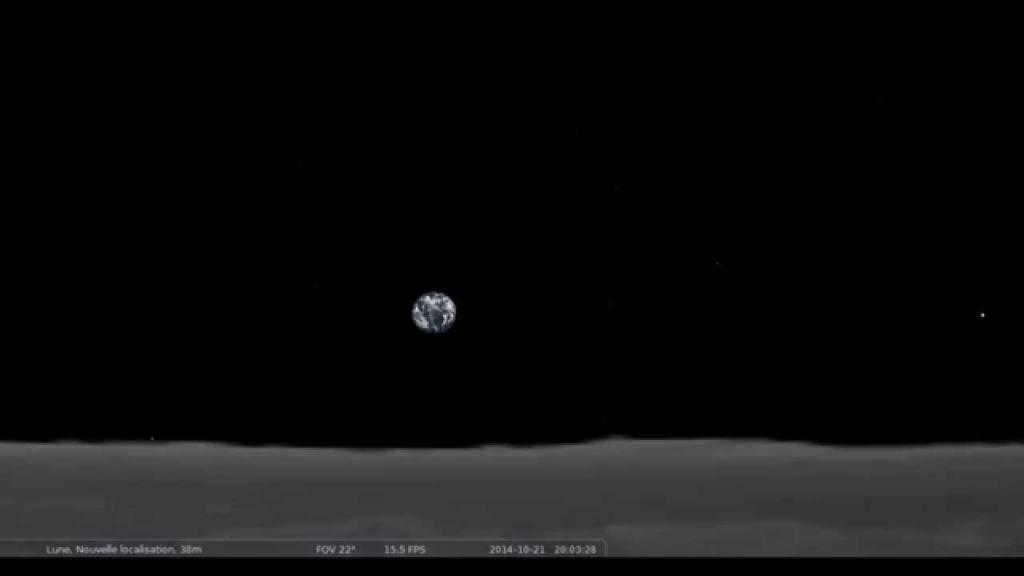
It is a common occurrence to witness the rising and setting of celestial bodies from the moon’s orbit. Were you aware of the following facts:
- The Mars rover Spirit managed to capture a breathtaking sunset on the Martian planet. The hues of blue and gray present in the image are truly mesmerizing.
- Auroras, commonly known as the Northern Lights, are not exclusive to Earth. On Jupiter, they take on a vibrant purple color.
- In the city of Murmansk, polar nights are an inevitable phenomenon. Conversely, during polar days in Alaska, large pumpkins weighing around a ton can grow.
- The shortest duration of a polar night in the Northern Hemisphere is just 2 days. However, at the South Pole, it lasts for nearly half a year, making it the longest polar night on Earth.
All of humanity’s scientific research has only scratched the surface of our understanding of space, planets, and their behavior in the vast expanse of the Universe. The Earth holds countless other mysteries waiting to be discovered. How long will the Sun continue to shine, and what untapped energy reserves does our galaxy possess?
Every day, we are witness to awe-inspiring astronomical phenomena such as sunrise and sunset, which occur at different times due to the Earth’s rotation around the Sun. Without this constant motion, the celestial luminary would remain fixed in the zenith, depriving us not only of the beauty of sunrises and sunsets, but rendering life on our planet impossible.
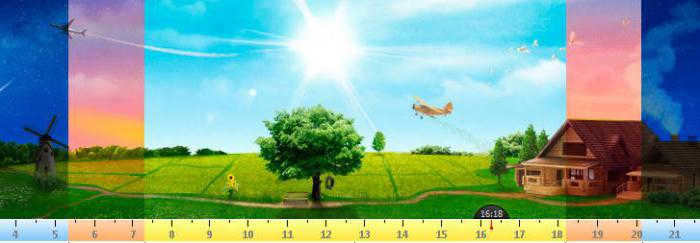
Sunset and sunrise
Sunset and sunrise are the periods of time when the upper edge of the Sun aligns with the horizon. The path of the celestial luminary varies depending on the location and time of year from which it is observed. At the equator, the Sun rises and sets directly perpendicular to the horizon, regardless of the season.

Where does the Sun come up?
Most individuals are familiar with the fact that the Sun comes up in the east and goes down in the west. However, this is just a generalization. In reality, this only occurs two times a year – during the vernal and fall equinoxes. On the other days, the Sun rises from the north and sets in the south. Every day, the specific points at which sunrise and sunset happen shift slightly. On the summer solstice, it comes up at its highest point to the northeast. Each day after that, the Sun rises a little more to the south. On the day of the autumnal equinox, the Sun rises directly in the east and sets in the west.

Throughout history, individuals have meticulously tracked the progression and characteristics of sunrise and sunset. In this way, individuals in ancient civilizations were able to use the jagged peaks of mountains on the horizon or the strategic alignment of standing stones to effectively gauge the passage of time.

The start and end of daylight hours are marked by the occurrence of sunset and sunrise. It is worth noting that both of these events are fleeting moments. Twilight refers to the period when day transitions into night, or vice versa. Morning twilight refers to the time between dawn and sunrise, while evening twilight denotes the period between sunset and sunset. The duration of twilight is determined by the geographical location and the specific date.
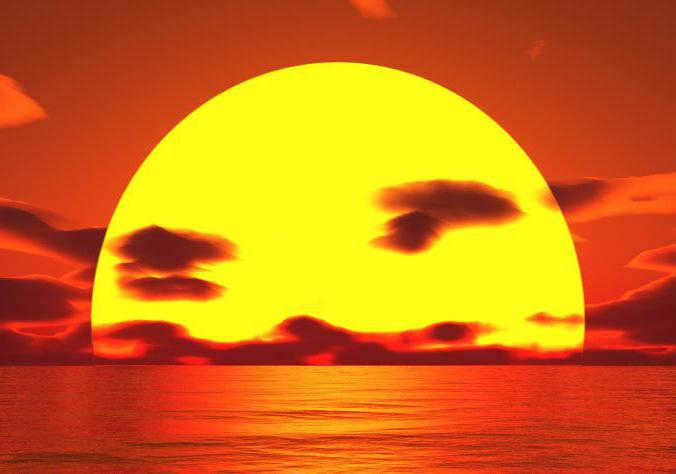
For instance, in regions near the Arctic and Antarctic, there is never total darkness during winter nights. Sunrise refers to the time when the upper part of the Sun becomes visible above the eastern horizon in the morning. On the other hand, sunset is the time when the lower part of the Sun is no longer visible and goes below the western horizon in the evening.
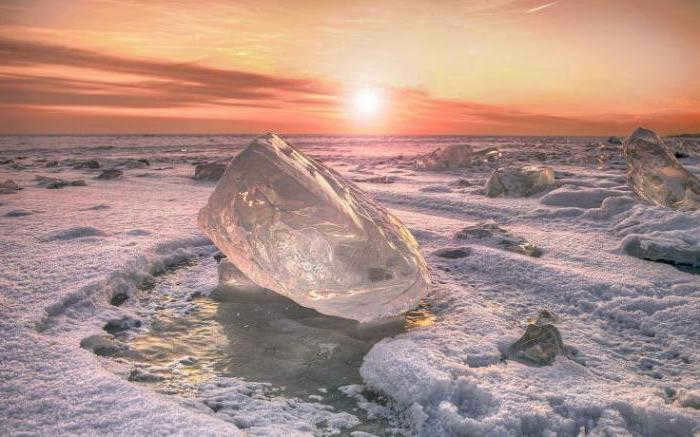
Duration of Daylight Hours
The duration of daylight hours, along with the timing of sunset and sunrise, is not consistent. In the northern hemisphere, the days are longer during the summer and shorter during the winter. Additionally, the length of daylight saving time varies depending on the geographical latitude, with shorter days at higher latitudes. Generally, this occurs during the winter season. An interesting fact is that due to the gradual slowing of the Earth’s rotation, the days are getting slightly longer over time. Approximately 100 years ago, a day was on average 1.7 milliseconds shorter than it is now.
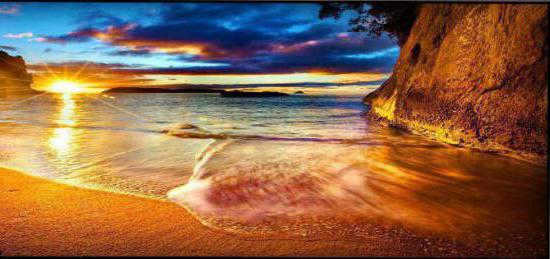
Differentiating Between Sunrise and Sunset
Observing the sun rise above the horizon can be a beautiful experience, but can we visually determine if it’s the start of a new day or the end of one? Is there an objective method to distinguish between these two similar phenomena? Interestingly, sunrises and sunsets have distinct visual characteristics, despite the symmetrical nature of twilight time intervals.
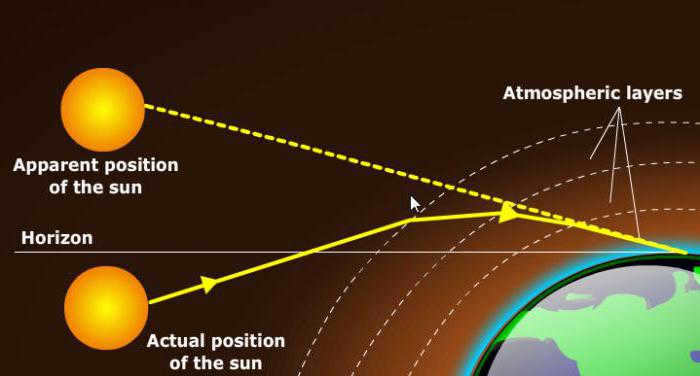
Nevertheless, there are two human factors that diminish their similarity. As the sun sets and dusk approaches, the human eyes, which are accustomed to daylight, start to tire. The light gradually fades away, the sky becomes darker, and humans are unable to adapt as rapidly as these changes occur. Consequently, certain shades become indistinguishable. However, at sunrise, a completely different scenario unfolds.






